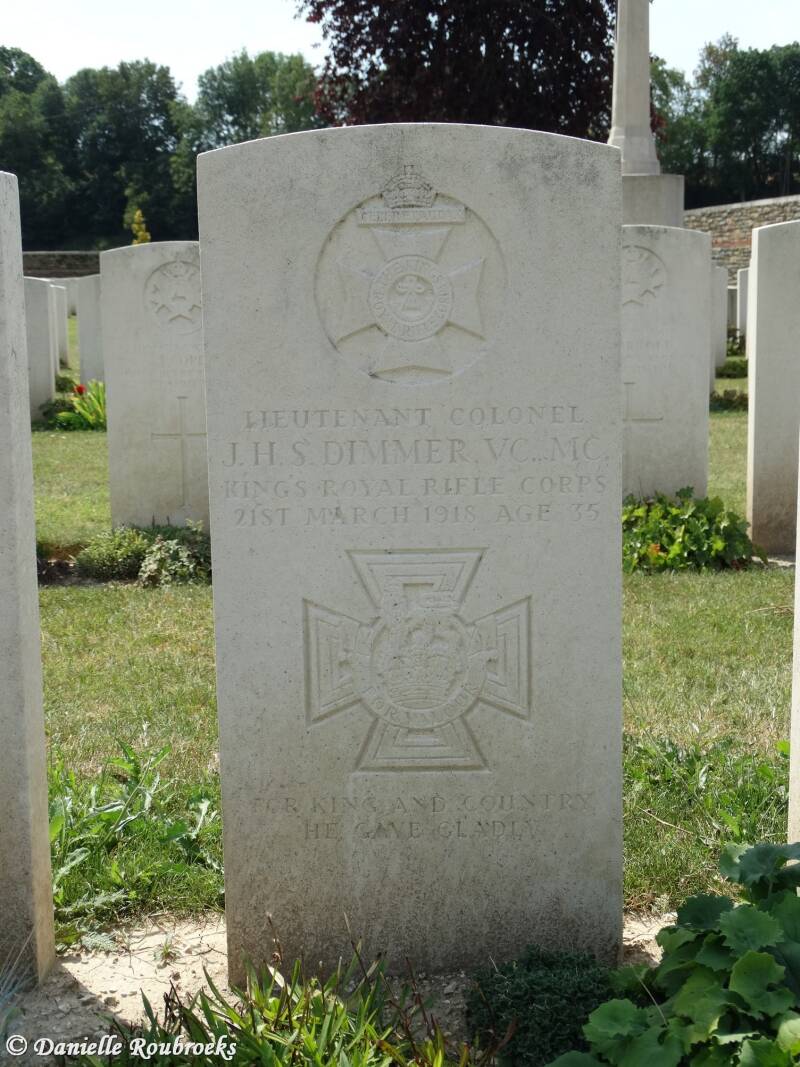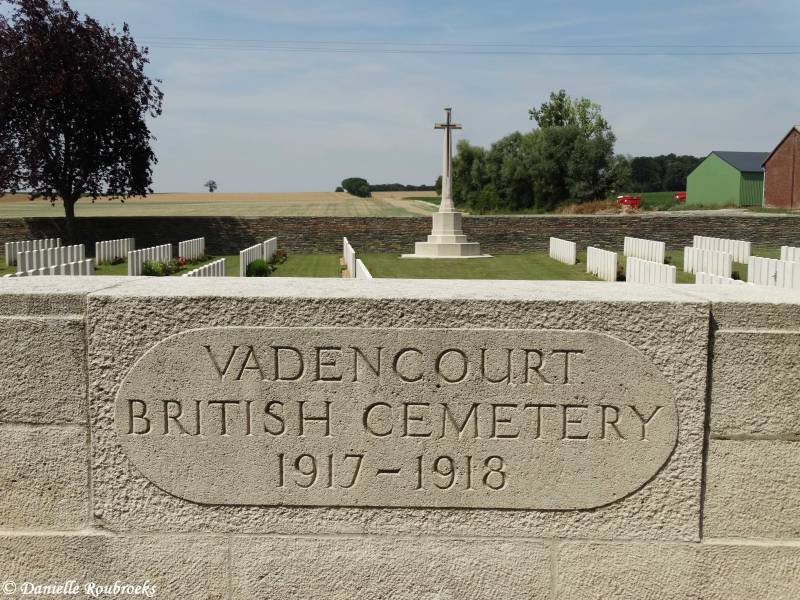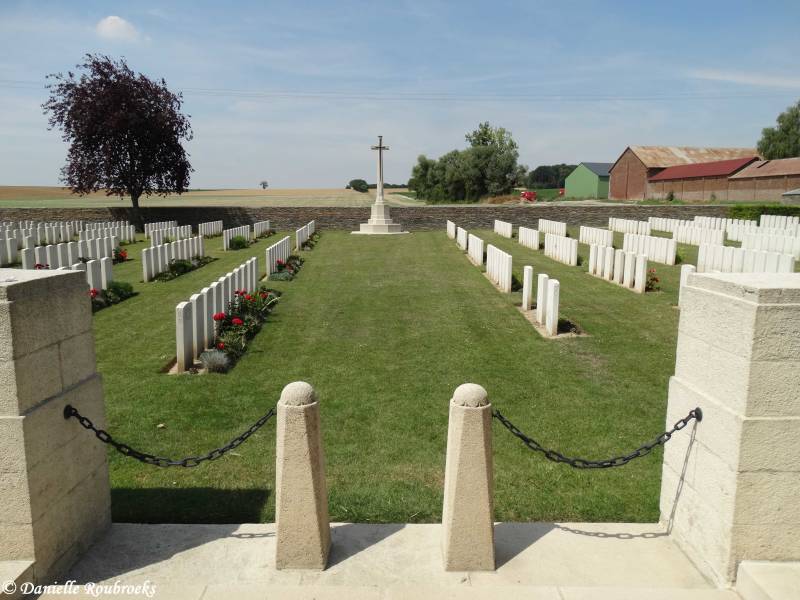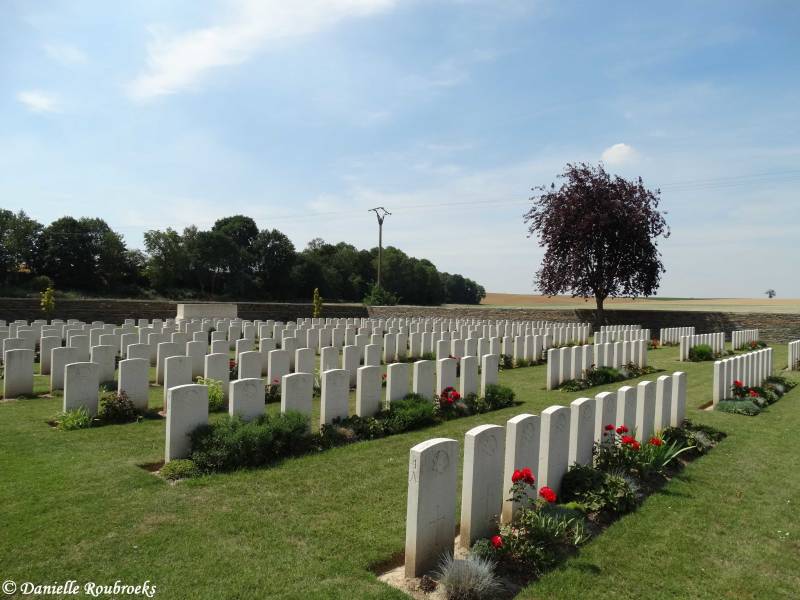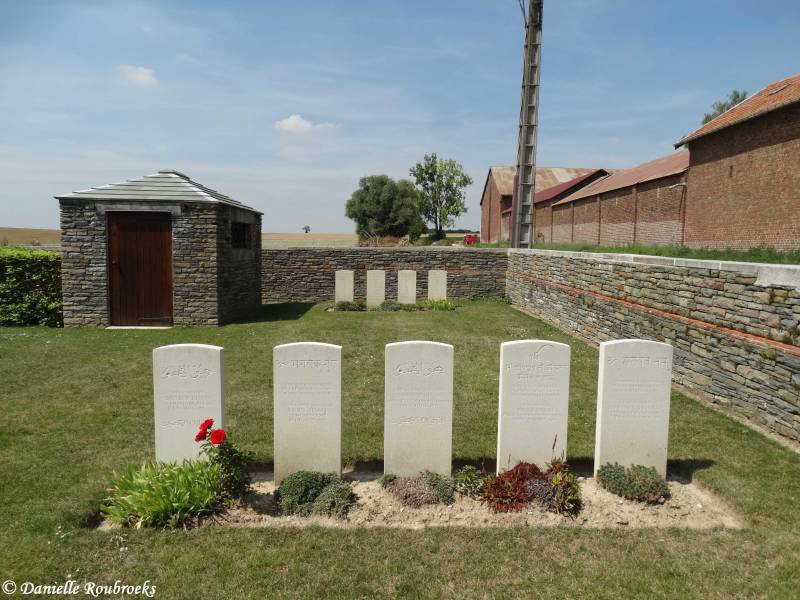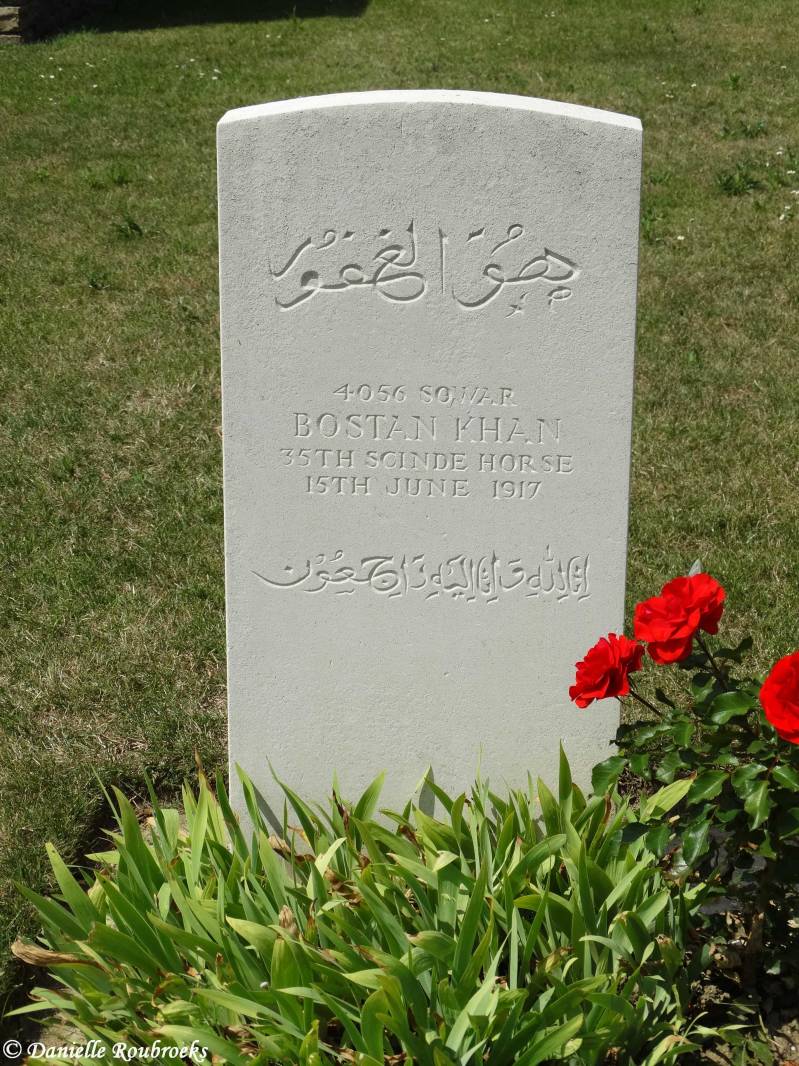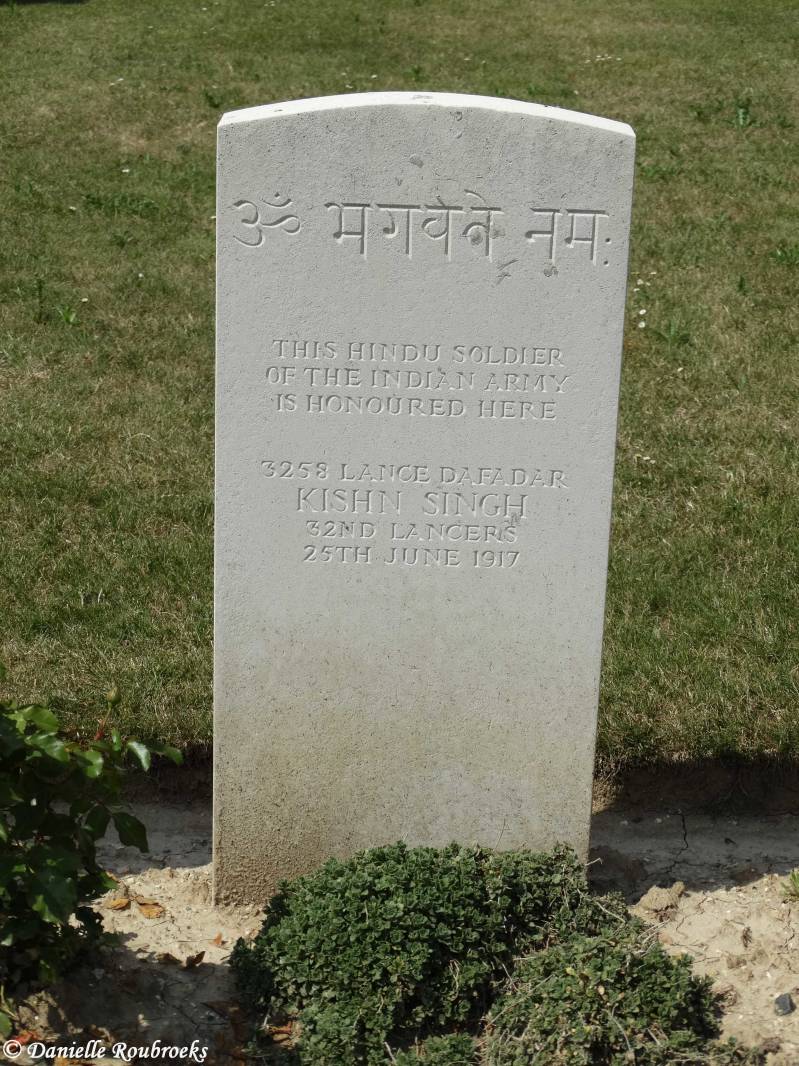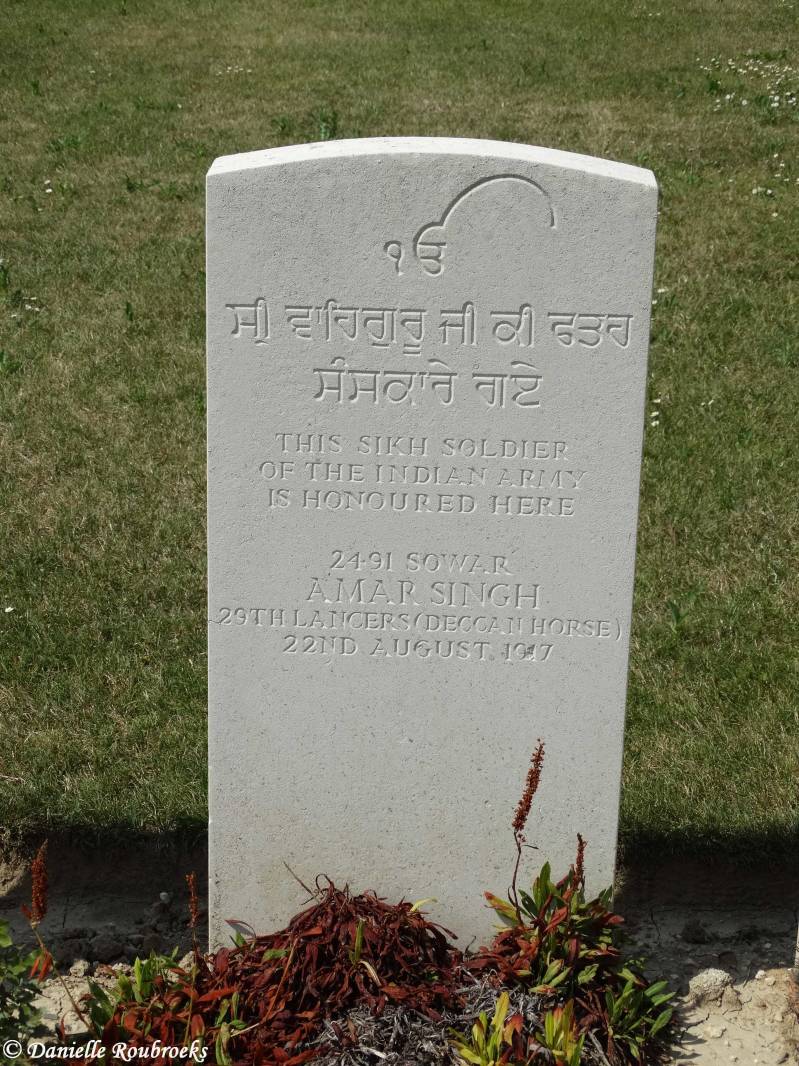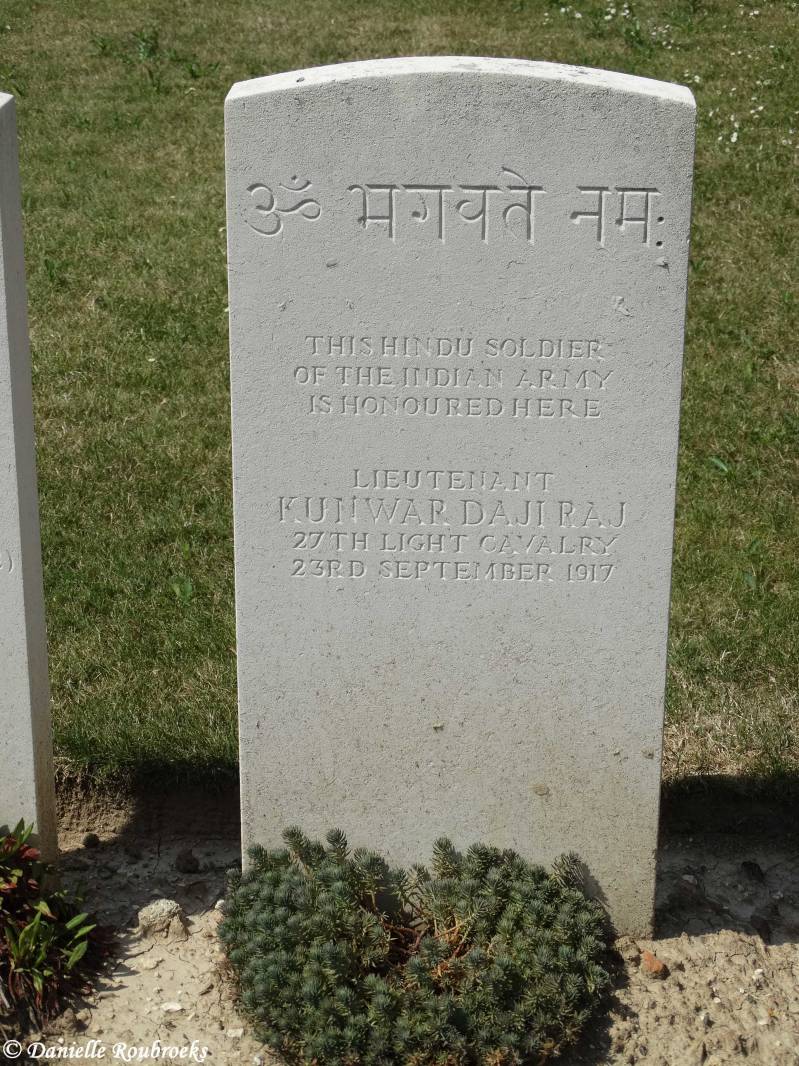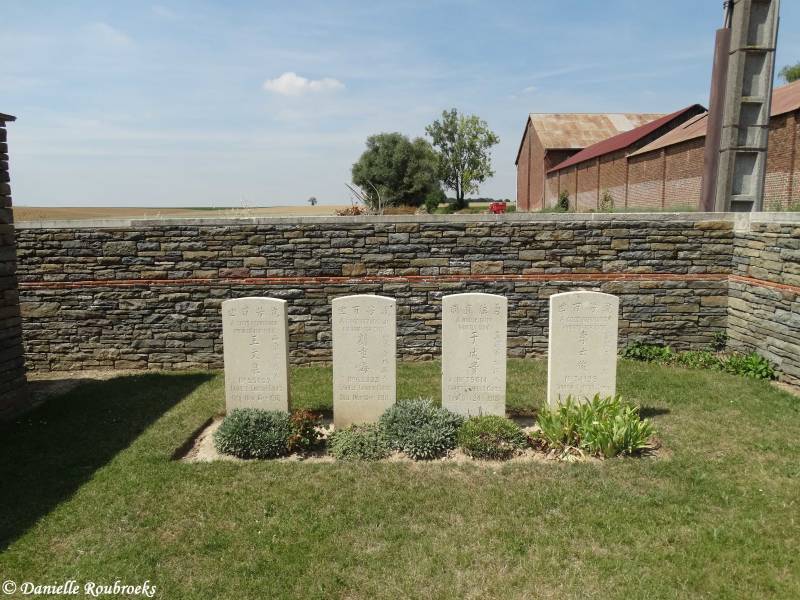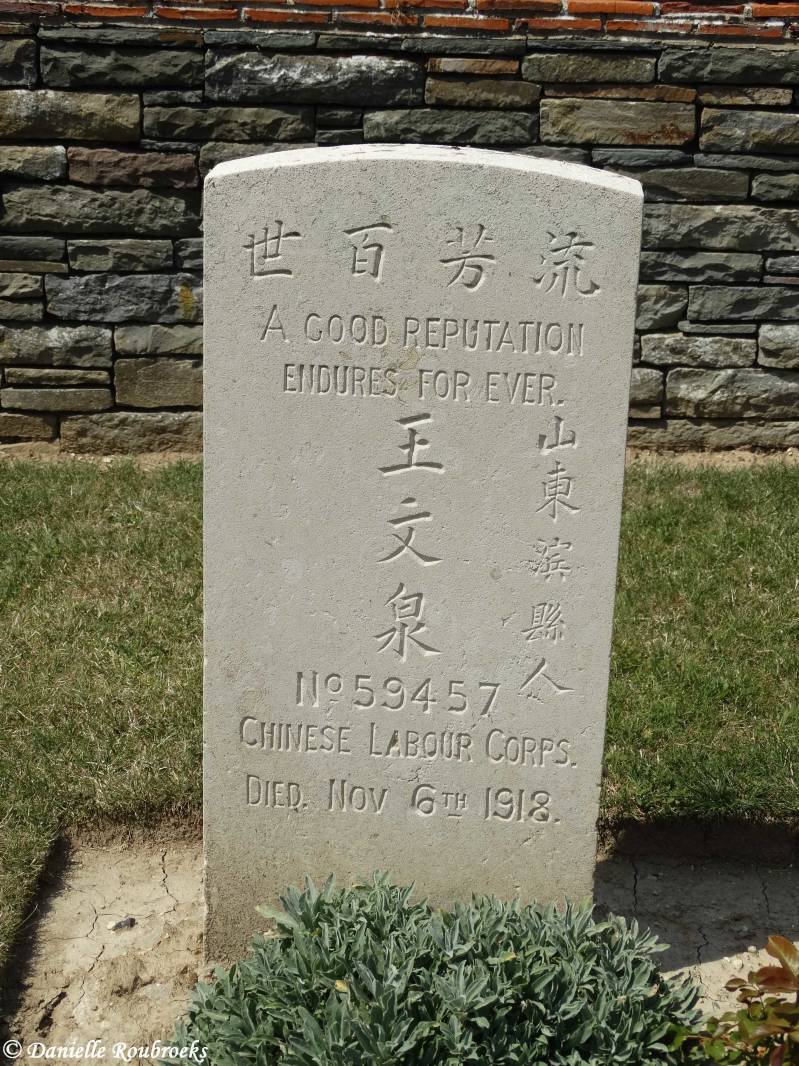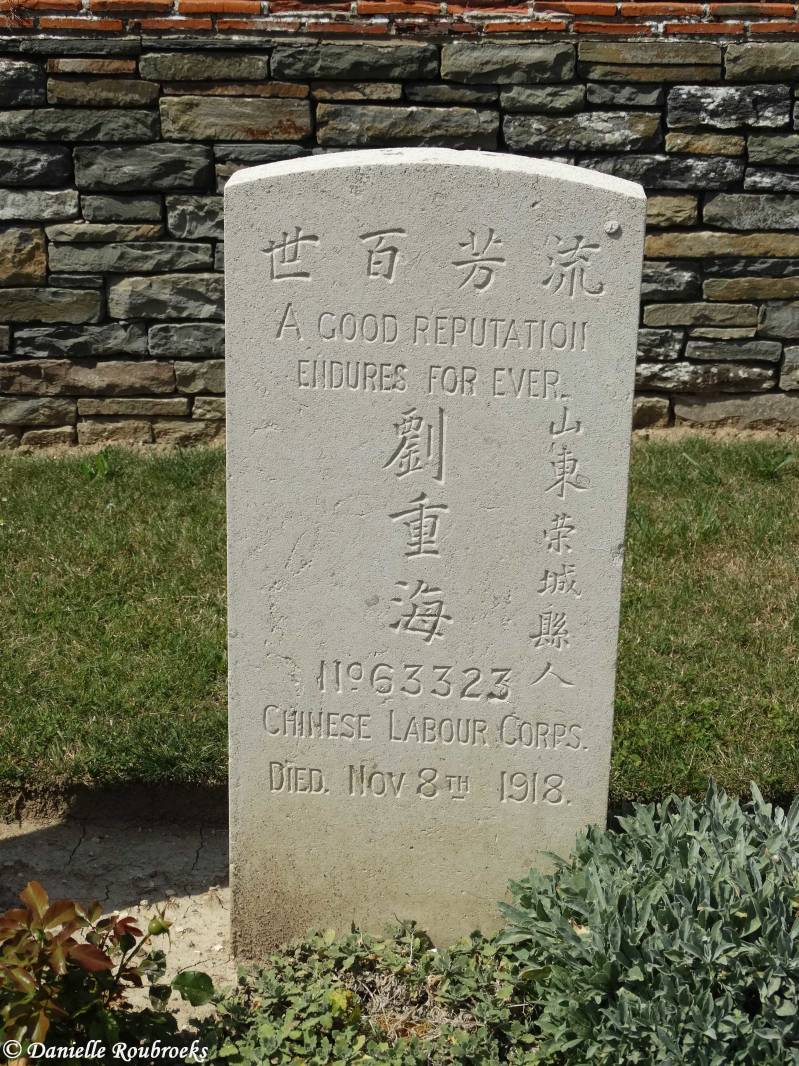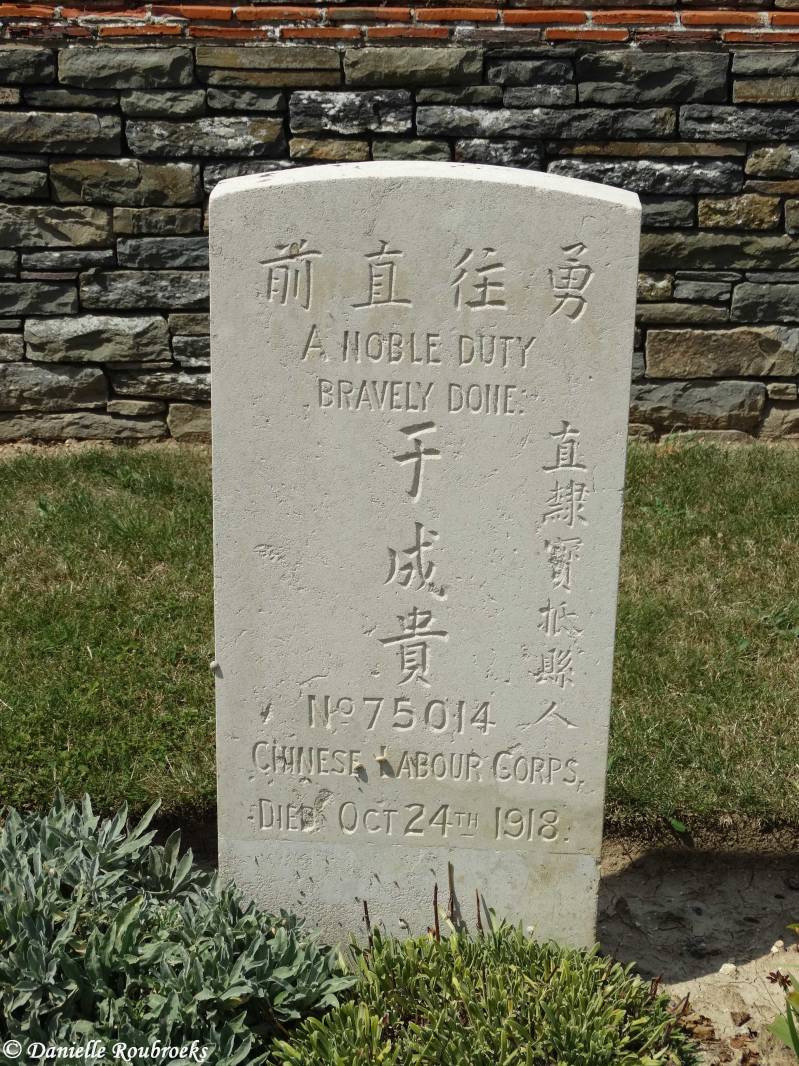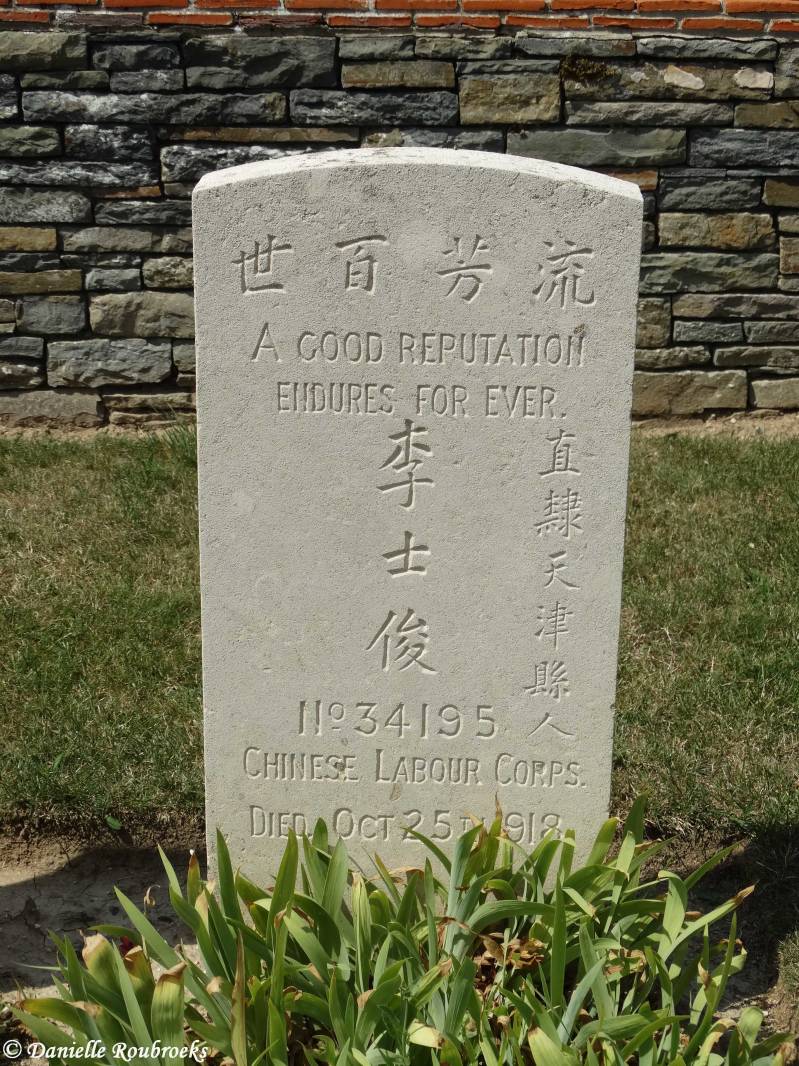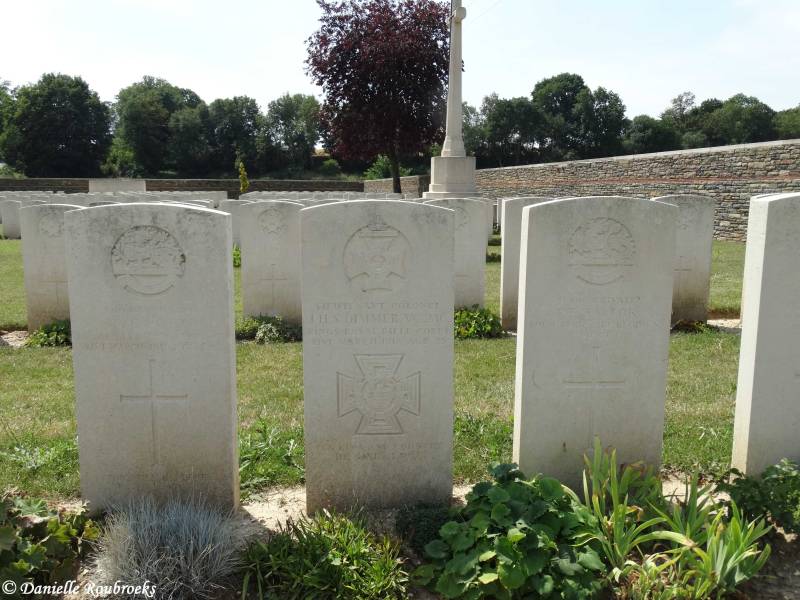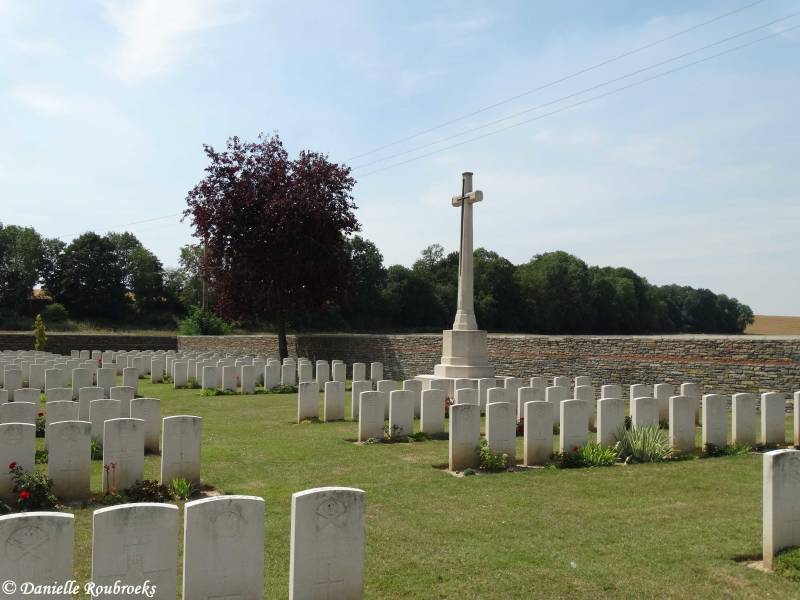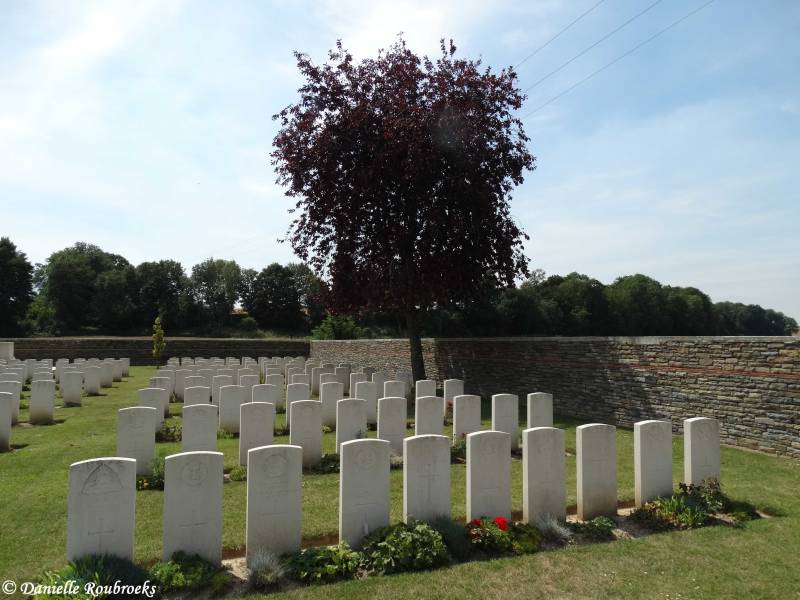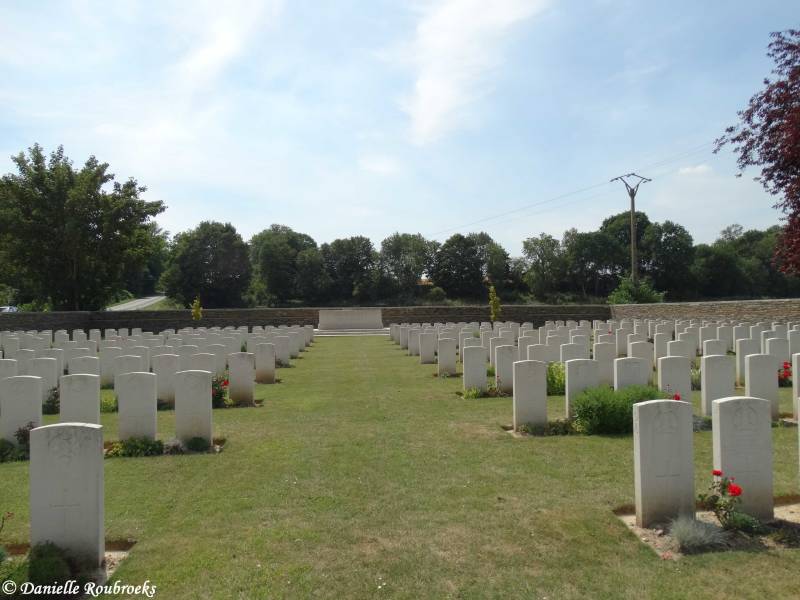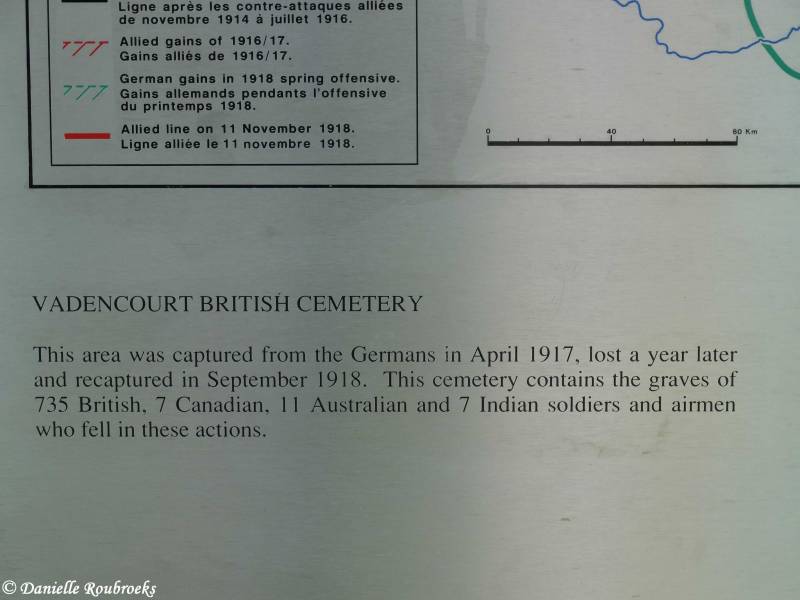Vadencourt British Cemetery
Historical Information (Source: CWGC)
Maissemy passed into British hands in 1917. It was captured by the enemy on the 21st March 1918, in spite of a strong resistance by the 24th Division and the 2/4th Royal Berks, and retaken by the 1st Division on the following 15th September. At the beginning of October, the IX Corps Main Dressing Station was at Vadencourt. Vadencourt British Cemetery (called at first Vadencourt New British Cemetery) was begun in August 1917, by fighting units, and used until March 1918. In October and November 1918, it was used by the 5th, 47th and 61st Casualty Clearing Stations (at Bihecourt, on the road to Vermand) as well as by Field Ambulances. These original graves are in Plots I-III. After the Armistice these plots were enlarged, and Plots IV and V made, by the concentration of graves from the surrounding battlefields and from a few small burial grounds. These scattered graves were mainly of April 1917, and March, April, September and October 1918, and many of them represented casualties of the 59th (North Midland) Division. At the same time four French, 31 American and 28 German Graves, all of October 1918, were removed to other cemeteries.
There are now over 750, 1914-18 war casualties commemorated in this site. Of these, over 200 are unidentified. Five Indian Cavalry soldiers, whose bodies were cremated, are named on special memorials. The Cemetery covers an area of 2,953 square metres and is enclosed by rubble wall.
Served with
- United Kingdom (523)
- Australian (9)
- Canadian (7)
- Indian (7)
Served in
- Army (537)
- Air Force (7)
- Navy (2)
VICTORIA CROSS
Lieutenant Colonel John Henry Stephen DIMMER - King's Royal Rifle Corps
attd. 2nd/4th Bn. Royal Berkshire Regiment
Died 21 March 1918 Age 35
Country of Service: United Kingdom
Awards: Victoria Cross, Military Cross, Mentioned in Despatches
Citation
An extract from "The London Gazette" dated 19th Nov., 1914. records the following:-
"This Officer served his machine gun during the attack on the 12th November at Klein Zillebeke until he had been shot five times - three times by shrapnel and twice by bullets, and continued at his post until his gun was destroyed."
Grave Reference: II. B. 46.
(Source: Wikipedia)



